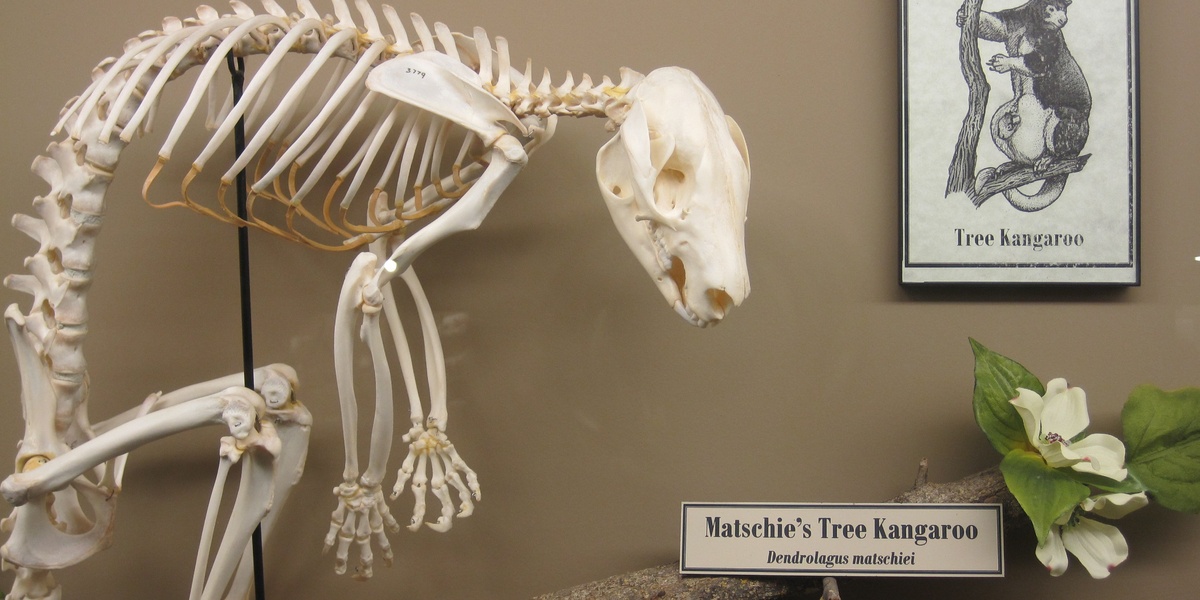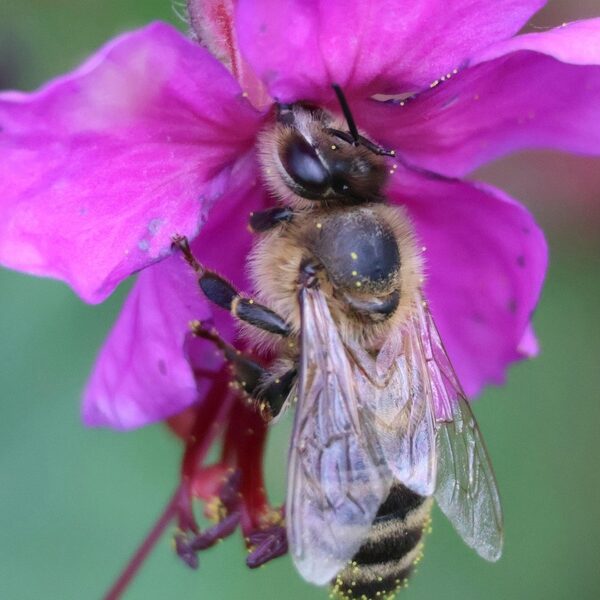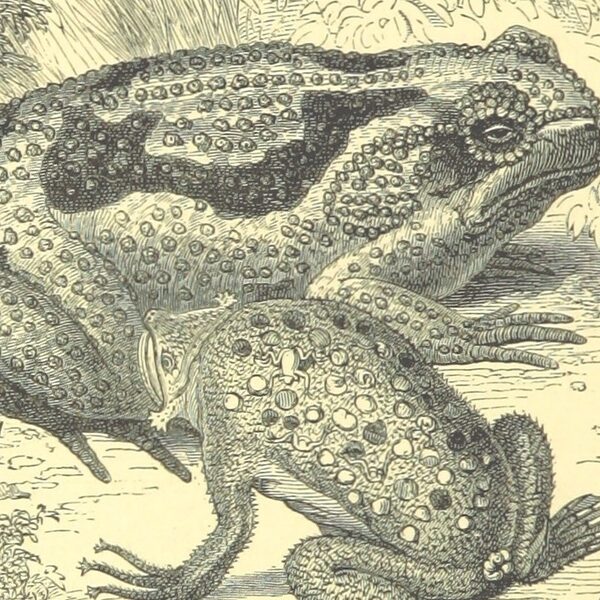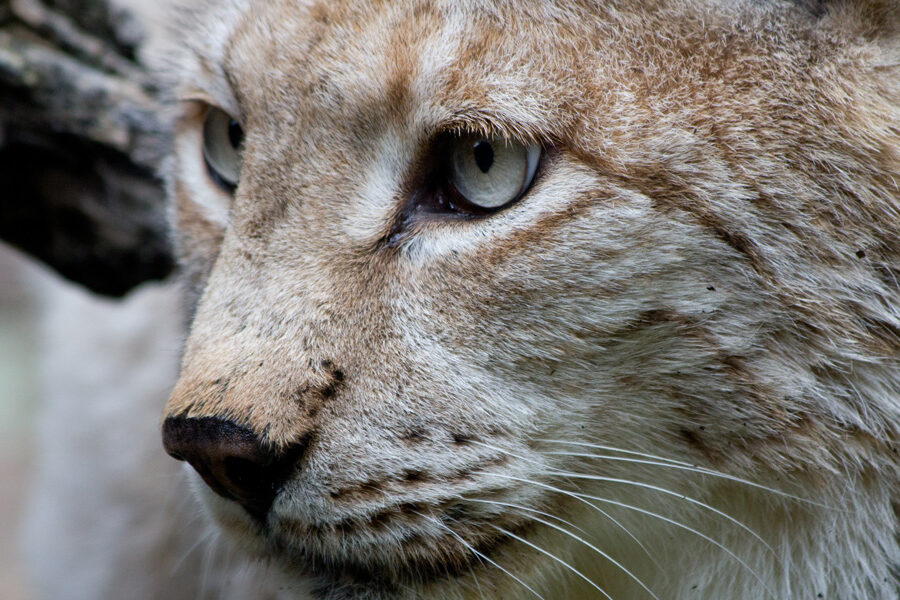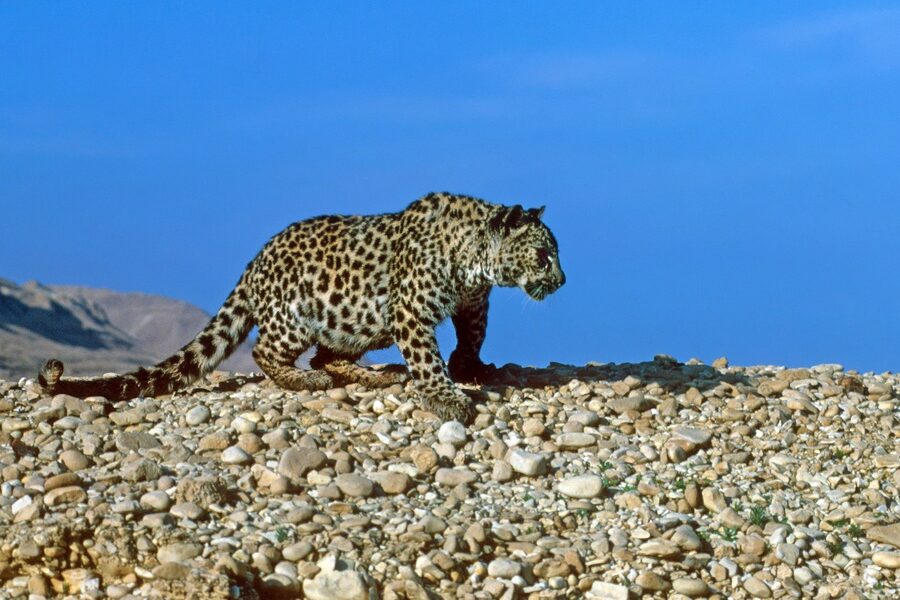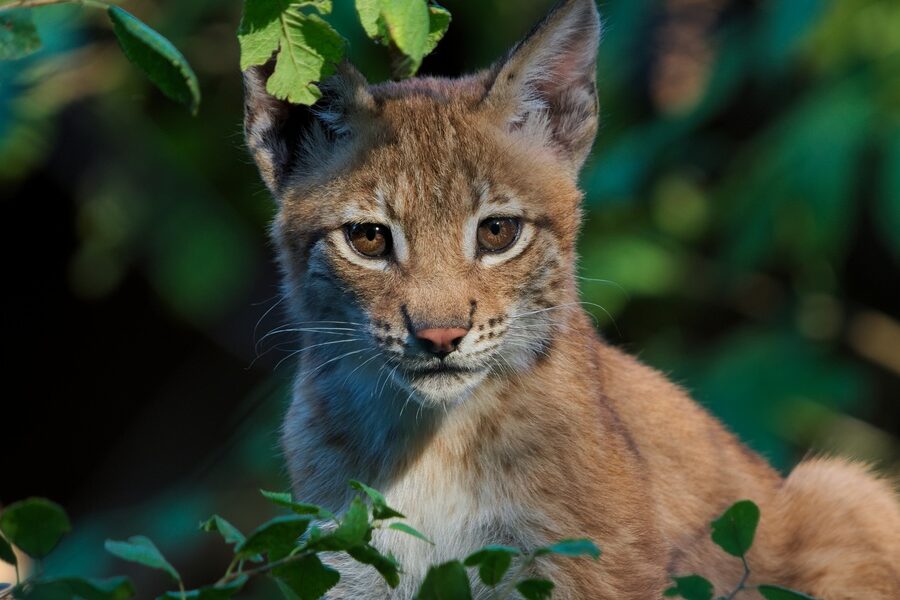Papua New Guinea’s islands and reefs harbor some of the world’s richest and most complex ecosystems, where mountain forests meet coral atolls and species often exist nowhere else. That patchwork of habitats supports animals found in tiny ranges and others that move between land and sea, making conservation both urgent and locally specific.
There are 88 Endangered Species in Papua New Guinea, ranging from Admiralty Cuscus to Zebra Shark. For each entry you’ll find below Scientific name,IUCN status,Range / habitat to help you see where species occur and how they’re classified, and to guide further reading you’ll find below.
How current is this list and where does the information come from?
The list compiles assessments from authoritative sources like the IUCN Red List, regional surveys and published research; conservation status can change, so check the IUCN website or recent peer-reviewed studies for the latest updates and any new local assessments.
What practical steps can I take to help these species in Papua New Guinea?
Support reputable conservation organizations working on habitat protection and community programs, choose responsible tourism operators, avoid wildlife products, and report notable sightings to citizen-science platforms to aid monitoring and local conservation efforts.
Endangered Species in Papua New Guinea
| Name | Scientific name | IUCN status | Range / habitat |
|---|---|---|---|
| Queen Alexandra’s Birdwing | Ornithoptera alexandrae | Endangered | Oro Province; lowland coastal rainforest. |
| Matschie’s Tree-kangaroo | Dendrolagus matschiei | Endangered | Huon Peninsula; montane cloud forests above 1,000 meters. |
| Goodfellow’s Tree-kangaroo | Dendrolagus goodfellowi | Endangered | Central Cordillera; mid-to-upper montane tropical forests. |
| Pig-nosed Turtle | Carettochelys insculpta | Endangered | Southern PNG rivers, lagoons, and estuaries. |
| New Guinea Harpy Eagle | Harpyopsis novaeguineae | Vulnerable | Throughout mainland PNG; undisturbed primary rainforest. |
| Gurney’s Eagle | Aquila gurneyi | Vulnerable | Throughout PNG islands; primary forest and forest edges. |
| Vulturine Parrot | Psittrichas fulgidus | Vulnerable | Mainland PNG; hills and montane rainforest. |
| Blue-eyed Cockatoo | Cacatua ophthalmica | Vulnerable | New Britain island; lowland and hill forests. |
| Southern Cassowary | Casuarius casuarius | Vulnerable | Southern PNG lowlands; dense tropical rainforests. |
| Doria’s Tree-kangaroo | Dendrolagus dorianus | Vulnerable | Central and southeastern mountains; high-altitude montane forests. |
| Seri’s Tree-kangaroo | Dendrolagus stellarum | Vulnerable | High mountains of central PNG; subalpine forests and shrublands. |
| Bronze Eared-frog | Crossodactylodes pintoi | Endangered | Mount Wilhelm region; montane cloud forests. |
| Geelvinck Bay Flying Fox | Pteropus pohlei | Endangered | Yapen and nearby islands, Biak-Supiori; lowland forests and swamps. |
| Bulmer’s Fruit Bat | Aproteles bulmerae | Critically Endangered | Hindenburg Wall area; high-altitude cave systems. |
| Great Hammerhead | Sphyrna mokarran | Critically Endangered | Coastal and offshore waters of PNG. |
| Scalloped Hammerhead | Sphyrna lewini | Critically Endangered | Coastal and pelagic waters around PNG. |
| Largetooth Sawfish | Pristis pristis | Critically Endangered | Rivers, estuaries, and coastal waters of southern PNG. |
| Green Sawfish | Pristis zijsron | Critically Endangered | Coastal marine and estuarine waters. |
| Whale Shark | Rhincodon typus | Endangered | Coastal and oceanic waters of PNG. |
| Oceanic Whitetip Shark | Carcharhinus longimanus | Critically Endangered | Offshore, deep-water environments around PNG. |
| Spinetail Devil Ray | Mobula japanica | Endangered | Pelagic waters of the Bismarck and Solomon Seas. |
| Reef Manta Ray | Mobula alfredi | Vulnerable | Coastal waters and coral reefs around PNG. |
| New Guinea Big-eared Bat | Pharotis imogene | Critically Endangered | Kama district, Central Province; lowland rainforest. |
| Long-beaked Echidna | Zaglossus bruijnii | Critically Endangered | Mountains of PNG; forests and alpine meadows. |
| Black-spotted Cuscus | Spilocuscus rufoniger | Critically Endangered | Northern PNG; undisturbed lowland and hill rainforests. |
| Eastern Long-beaked Echidna | Zaglossus bartoni | Critically Endangered | Central Cordillera and Huon Peninsula; montane forests to alpine grasslands. |
| Fly River Goby | Glossogobius flyensis | Vulnerable | Fly River system; freshwater streams and rivers. |
| Papuan Blacksnake | Pseudechis papuanus | Vulnerable | Southern PNG; grasslands, savannas, and woodlands. |
| Woodlark Cuscus | Phalanger lullulae | Endangered | Woodlark and Alcester Islands; tropical moist forests. |
| New Britain Goshawk | Accipiter princeps | Vulnerable | New Britain island; montane forests. |
| Sclater’s Crowned-pigeon | Goura sclaterii | Vulnerable | Southern PNG; lowland and swamp forests. |
| Western Crowned-pigeon | Goura cristata | Vulnerable | Islands off western PNG; lowland and swamp forests. |
| Palm Cockatoo | Probosciger aterrimus | Vulnerable | Mainland PNG; rainforest and woodland savanna. |
| Golden-masked Owl | Tyto aurantia | Vulnerable | New Britain island; lowland and hill rainforests. |
| Fergusson Island striped possum | Dactylopsila kambuayai | Critically Endangered | Fergusson Island; montane tropical forests. |
| Emperor Bird-of-paradise | Paradisaea guilielmi | Vulnerable | Huon Peninsula; mid-montane forests. |
| Wahnes’s Parotia | Parotia wahnesi | Vulnerable | Huon Peninsula and Adelbert Mountains; montane forests. |
| Blue Bird-of-paradise | Paradisaea rudolphi | Vulnerable | Eastern central cordillera; mid-montane forests. |
| Black-faced Monarch | Monarcha melanopsis | Vulnerable | Eastern PNG and associated islands; rainforest and wet forests. |
| New Guinea Vulturine Parrot | Psittrichas fulgidus | Vulnerable | Throughout mainland PNG; hill and lower montane forests. |
| Bare-eyed Rail | Gymnocrex plumbeiventris | Vulnerable | Mainland PNG and some islands; dense lowland and swamp forests. |
| New Guinea Woodcock | Scolopax rosenbergii | Vulnerable | Central mountain ranges; montane and sub-alpine forests. |
| Long-tailed Paradigalla | Paradigalla carunculata | Vulnerable | Arfak Mountains (Indonesia), possibly extending to PNG border ranges; montane forests. |
| Spangled Gudgeon | Ophiocara porocephala | Vulnerable | Coastal streams and estuaries. |
| Zebra Shark | Stegostoma tigrinum | Endangered | Coral reefs and sandy flats in PNG’s coastal waters. |
| Tawny Nurse Shark | Nebrius ferrugineus | Vulnerable | Coastal waters, lagoons, and coral reefs. |
| Bigeye Thresher Shark | Alopias superciliosus | Endangered | Oceanic and coastal pelagic waters around PNG. |
| Silky Shark | Carcharhinus falciformis | Vulnerable | Tropical oceanic waters worldwide, including PNG. |
| Big-nosed Unicornfish | Naso vlamingii | Vulnerable | Coral reefs throughout PNG’s waters. |
| Humphead Wrasse | Cheilinus undulatus | Endangered | Coral reefs throughout PNG. |
| Green Humphead Parrotfish | Bolbometopon muricatum | Vulnerable | Coral reefs in PNG’s waters. |
| Squaretail Coral Grouper | Plectropomus areolatus | Vulnerable | Coral reefs around PNG. |
| Creek Whaler | Carcharhinus fitzroyensis | Vulnerable | Inshore coastal and estuarine waters of southern PNG. |
| Bougainville Monkey-faced Bat | Pteralopex ancep | Critically Endangered | Bougainville Island; primary montane forest. |
| New Georgian Monkey-faced Bat | Pteralopex taki | Endangered | Solomon Islands including Bougainville; lowland and montane forests. |
| Northern Glider | Petaurus abidi | Critically Endangered | Torricelli Mountains; mid-montane oak forests. |
| Tenkile | Dendrolagus scottae | Critically Endangered | Torricelli Mountains; mid-montane cloud forests. |
| Golden-mantled Tree-kangaroo | Dendrolagus pulcherrimus | Critically Endangered | Torricelli and Foja Mountains; montane forests. |
| Admiralty Cuscus | Spilocuscus kraemeri | Vulnerable | Manus and nearby Admiralty Islands; tropical forests and gardens. |
| Telefomin Cuscus | Phalanger matanim | Critically Endangered | Nong River valley, near Telefomin; montane oak forest. |
| White-bellied Sea-eagle | Haliaeetus leucogaster | Vulnerable | Coasts and large inland waters throughout PNG. |
| Salvadori’s Teal | Salvadorina waigiuensis | Vulnerable | High-altitude rivers and lakes in the central mountains. |
| Beck’s Petrel | Pseudobulweria becki | Critically Endangered | Bismarck Archipelago; pelagic, nests on high volcanic islands. |
| Heinroth’s Shearwater | Puffinus heinrothi | Vulnerable | Bismarck Archipelago and Bougainville; pelagic, nests on small islands. |
| New Ireland Friarbird | Philemon eichhorni | Vulnerable | New Ireland; montane forests. |
| Red-breasted Pygmy Parrot | Micropsitta bruijnii | Vulnerable | Throughout PNG’s mountain ranges; montane forests. |
| Mottled Berryhunter | Rhagologus leucostigma | Vulnerable | Central mountain ranges; lower and mid-montane forest. |
| Papuan Whipbird | Androphobus viridis | Vulnerable | Central mountain ranges of western PNG; dense montane undergrowth. |
| Yellow-legged Pigeon | Columba pallidiceps | Endangered | Bismarck Archipelago and Solomon Islands; undisturbed primary forest. |
| Moseley’s Rock-rat | Parahydromys moseleyi | Vulnerable | Central Cordillera; montane forests, often near streams. |
| Northern Common Cuscus | Phalanger orientalis | Vulnerable | Northern PNG and numerous islands; forests and human-modified areas. |
| Stein’s Cuscus | Phalanger vestitus | Vulnerable | Central Cordillera; high-altitude montane and subalpine forests. |
| Ground Cuscus | Phalanger gymnotis | Vulnerable | Mainland PNG and Aru Islands; lowland to montane forests. |
| Common Spotted Cuscus | Spilocuscus maculatus | Vulnerable | Mainland PNG and surrounding islands; rainforests, mangroves, and gardens. |
| Leatherback Sea Turtle | Dermochelys coriacea | Vulnerable | Nests on PNG coasts (e.g., Bougainville, Morobe); oceanic. |
| Green Sea Turtle | Chelonia mydas | Endangered | Nests on PNG beaches and forages in coastal waters. |
| Hawksbill Sea Turtle | Eretmochelys imbricata | Critically Endangered | Nests on PNG islands and forages in coral reefs. |
| Loggerhead Sea Turtle | Caretta caretta | Vulnerable | Forages in PNG waters; nests elsewhere. |
| Olive Ridley Sea Turtle | Lepidochelys olivacea | Vulnerable | Nests in southern PNG and forages in coastal waters. |
| New Guinea Crocodile | Crocodylus novaeguineae | Vulnerable | Freshwater swamps, rivers, and lakes throughout mainland PNG. |
| Finsch’s Imperial-pigeon | Ducula finschii | Vulnerable | Bismarck Archipelago; primary and secondary hill forests. |
| Dwarf Cassowary | Casuarius bennetti | Vulnerable | Mainland PNG and New Britain; steep, forested mountains. |
| Yellow-bibbed Lory | Lorius chlorocercus | Vulnerable | Admiralty Islands and Solomon Islands; forests and coconut plantations. |
| Purple-bellied Lory | Lorius hypoinochrous | Vulnerable | Eastern PNG islands and Bismarck Archipelago; lowland forests. |
| Duyvenbode’s Lory | Chalcopsitta duivenbodei | Vulnerable | Northern coastal lowlands of mainland PNG; forest edge and secondary growth. |
| Black-capped Lory | Lorius lory | Vulnerable | Mainland PNG and adjacent islands; primary and secondary lowland forests. |
| Red-and-blue Lory | Eos histrio | Endangered | Talaud Islands (Indonesia), formerly on islands near PNG; lowland forest. |
| Moluccan King-parrot | Alisterus amboinensis | Vulnerable | Islands of western PNG and eastern Indonesia; lowland and hill forests. |
Images and Descriptions
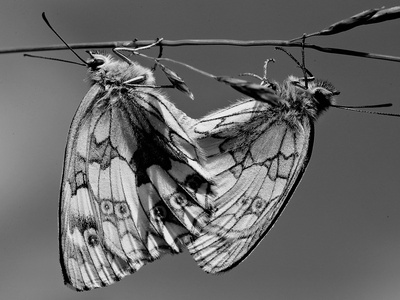
Queen Alexandra’s Birdwing
The world’s largest butterfly, with females reaching a 25 cm wingspan. Its survival is critically threatened by habitat destruction for oil palm plantations, which has eliminated much of the vine its larvae depend on for food. Conservation efforts are crucial for its survival.
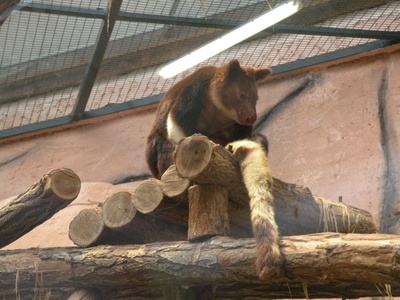
Matschie’s Tree-kangaroo
Known for its rich chestnut-brown fur and yellow-ringed tail, this arboreal marsupial is a skillful climber. It is heavily threatened by hunting pressure from local communities and ongoing habitat loss due to subsistence agriculture and coffee plantations within its limited range.
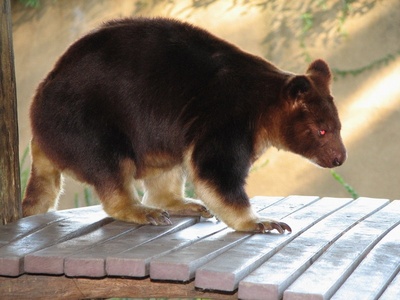
Goodfellow’s Tree-kangaroo
A strikingly beautiful marsupial with short, woolly fur of reddish-brown and pale stripes. Over-hunting for food and trade, combined with habitat loss from logging and agriculture, has caused a severe decline in its population throughout its range.
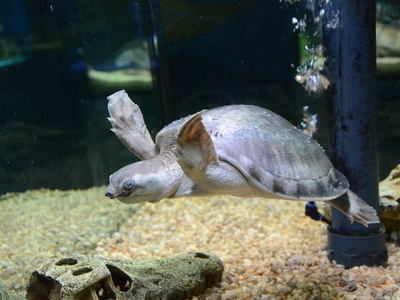
Pig-nosed Turtle
This unique freshwater turtle possesses flippers like a marine turtle and a fleshy, pig-like snout. Populations have drastically declined due to the unsustainable and widespread harvesting of its eggs for food, along with habitat degradation in its riverine nesting sites.
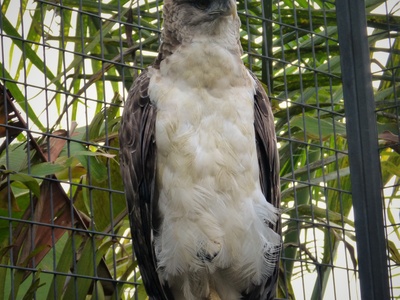
New Guinea Harpy Eagle
Also known as the Papuan Eagle, this powerful raptor is the island’s top avian predator. It is threatened by deforestation, which reduces its hunting grounds and nesting sites. It is also hunted for its feathers, which are used in traditional ceremonies.
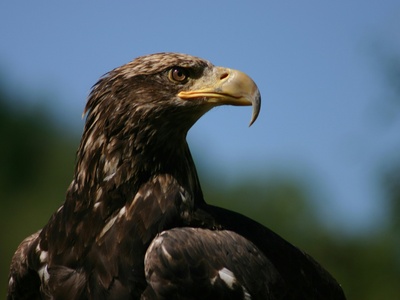
Gurney’s Eagle
A large, dark brown eagle that preys on mammals like cuscuses. Its population is declining due to widespread deforestation for logging and agriculture, which fragments its habitat and reduces prey availability. It is naturally rare and sparsely distributed.
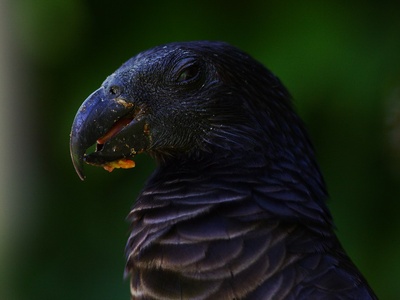
Vulturine Parrot
Also known as Pesquet’s Parrot, it is a large, specialized parrot that feeds almost exclusively on figs. Its population is threatened by targeted hunting for its brilliant red and black feathers, used in ceremonial dress, and by ongoing habitat loss.
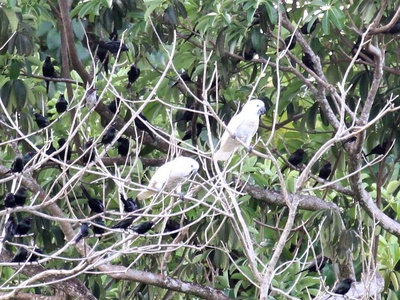
Blue-eyed Cockatoo
This large white cockatoo is distinguished by its prominent blue eye-ring. It faces significant threats from trapping for the illegal pet trade and the rapid loss of its lowland forest habitat due to conversion for oil palm plantations and logging operations.
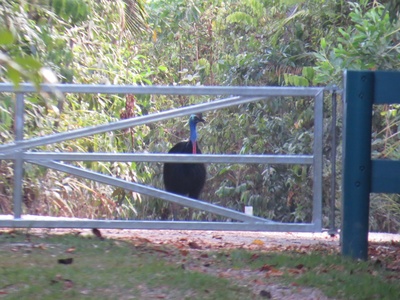
Southern Cassowary
A large, flightless bird crucial for seed dispersal in its forest ecosystem. It is threatened by habitat loss from deforestation and is frequently hunted for its meat and feathers. Road strikes also pose a significant risk in areas where its habitat is fragmented.
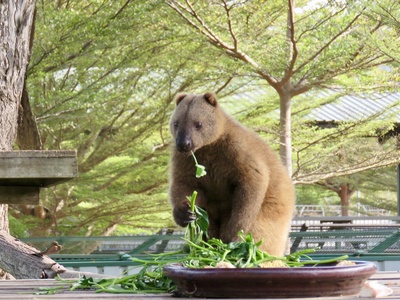
Doria’s Tree-kangaroo
A large, stocky tree-kangaroo with long, dark brown fur. It is one of the most heavily hunted tree-kangaroo species for its meat, and its populations are also declining due to habitat degradation from human encroachment into its high-altitude forest home.
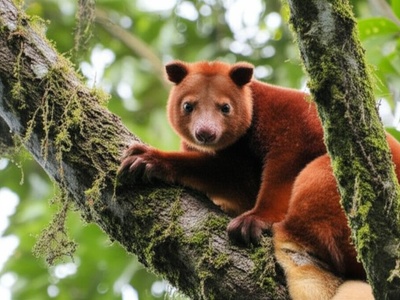
Seri’s Tree-kangaroo
Once considered a subspecies of Doria’s Tree-kangaroo, this high-altitude species is exceptionally rare. It is threatened by hunting with dogs and habitat loss, with climate change potentially pushing its specialized alpine habitat to even higher, smaller areas.
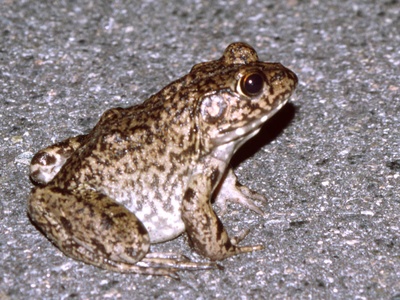
Bronze Eared-frog
A small, cryptic frog species known from a very limited high-altitude area. Its population is believed to be in severe decline due to the devastating effects of the amphibian chytrid fungus, compounded by habitat degradation and the impacts of climate change.
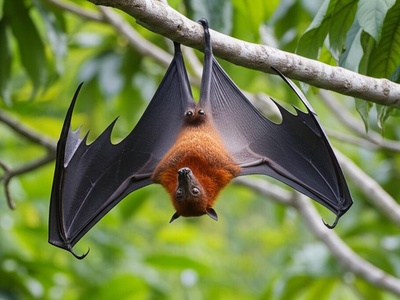
Geelvinck Bay Flying Fox
A medium-sized fruit bat endemic to a few islands. It is highly vulnerable to habitat loss from logging and agriculture. Hunting for food also poses a significant threat, and its small island populations are susceptible to extreme weather events.
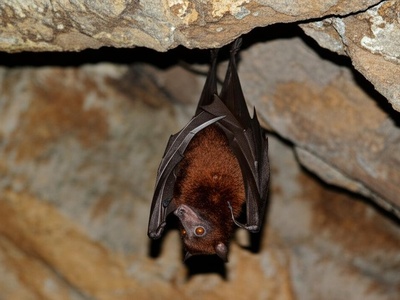
Bulmer’s Fruit Bat
One of the world’s rarest bats, it roosts in a single large cave. It was once thought to be extinct. The population is extremely vulnerable to disturbance at its roosting site and hunting, which previously decimated its numbers.
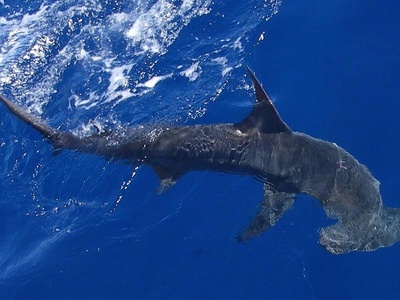
Great Hammerhead
This iconic shark is found worldwide in tropical waters, including PNG. It suffers extreme population declines globally due to being targeted for its large fins for the shark-fin trade and as bycatch in commercial and artisanal fisheries.
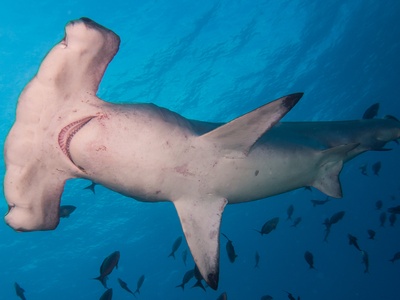
Scalloped Hammerhead
This schooling hammerhead is severely threatened by overfishing, both targeted and as bycatch. Its fins are highly valued in the shark-fin trade, leading to unsustainable fishing pressure that has caused drastic population declines across its global range.
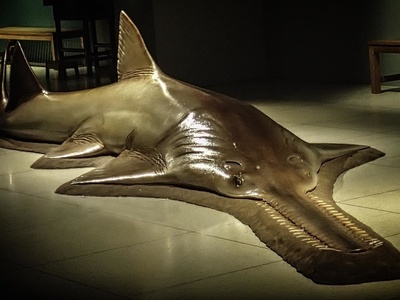
Largetooth Sawfish
This critically endangered ray is characterized by its long, tooth-studded rostrum. It is extremely vulnerable to entanglement in fishing nets (bycatch) and is also targeted for its fins and rostrum. Habitat degradation in river systems further threatens its survival.
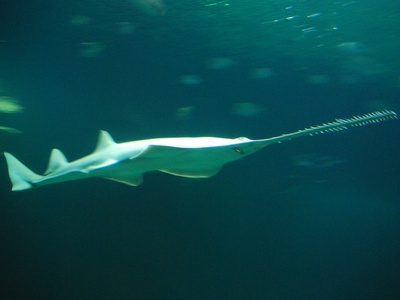
Green Sawfish
Facing an extremely high risk of extinction, this sawfish is primarily threatened by accidental capture in various fishing nets, particularly gillnets and trawls. Its toothed rostrum makes it especially prone to entanglement, leading to catastrophic population declines.
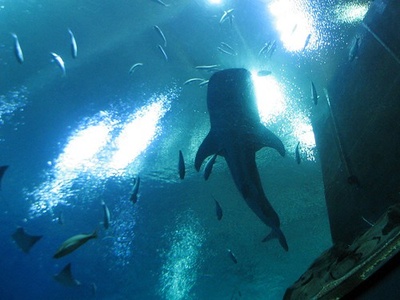
Whale Shark
The world’s largest fish, this gentle filter-feeder is threatened by fisheries bycatch, vessel strikes, and in some regions, targeted fishing. Entanglement in fishing gear is a major cause of mortality for this slow-moving and slow-reproducing giant.
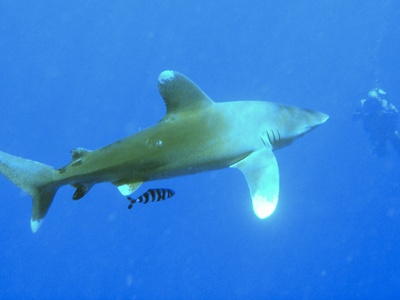
Oceanic Whitetip Shark
Once one of the most abundant oceanic sharks, its populations have been decimated by targeted fishing for its large fins and as bycatch in tuna and swordfish longline fisheries. Its slow reproductive rate makes it extremely vulnerable to overexploitation.
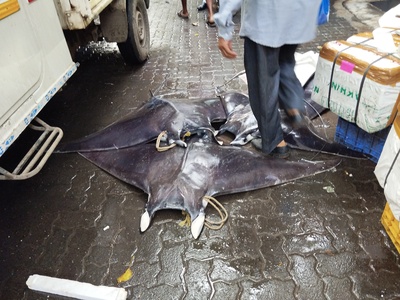
Spinetail Devil Ray
A large, filter-feeding ray often found in oceanic waters. It is highly vulnerable to being caught as bycatch in purse seine and gillnet fisheries. There is also a growing threat from targeted fisheries for its valuable gill plates.
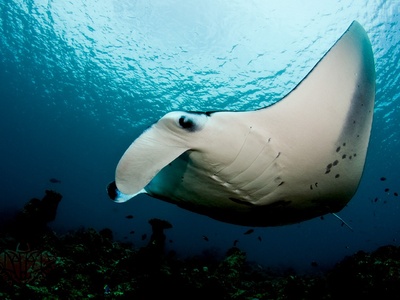
Reef Manta Ray
This charismatic ray is a major draw for tourism but is threatened by targeted fishing for its gill plates, which are used in traditional medicine, and by accidental entanglement in fishing lines and nets. Habitat degradation also impacts its populations.
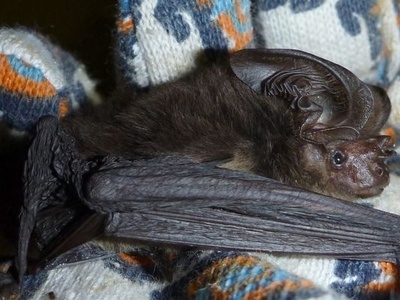
New Guinea Big-eared Bat
Believed extinct for 120 years until its rediscovery in 2012. This bat is known from a single location and is critically endangered due to its extremely small population and limited range, which is threatened by ongoing habitat loss.
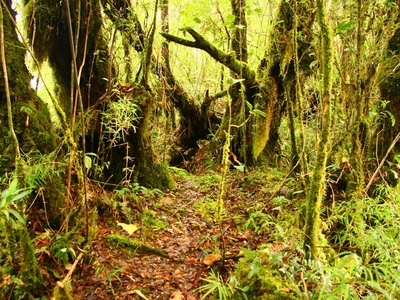
Long-beaked Echidna
This unique, egg-laying mammal is one of the most threatened on Earth. It is hunted relentlessly with trained dogs for its meat, which is considered a delicacy. Its population has been extirpated from many areas due to this intense hunting pressure.
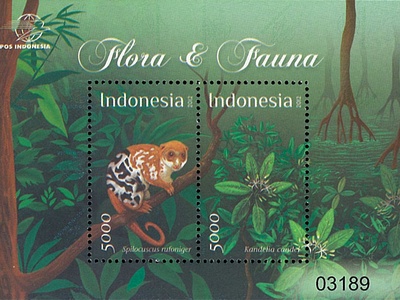
Black-spotted Cuscus
A large, strikingly patterned possum, it is one of the most endangered marsupials in New Guinea. It is heavily hunted for food and its population has plummeted due to habitat loss from logging and conversion of forests to agricultural land.
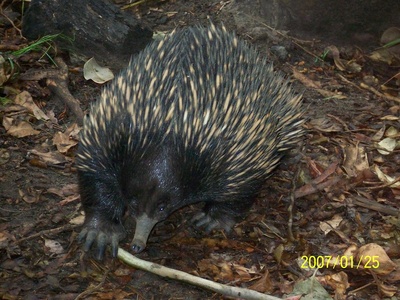
Eastern Long-beaked Echidna
Larger than its western counterpart, this echidna species is also critically endangered due to over-hunting for its meat by local communities. Expanding agriculture and logging are also fragmenting and destroying its high-altitude habitat.
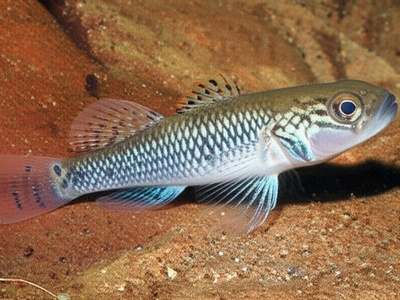
Fly River Goby
A small freshwater fish endemic to the Fly River. It is considered vulnerable due to its restricted range and the potential impacts of pollution from mining activities and habitat degradation from deforestation and agriculture within its watershed.
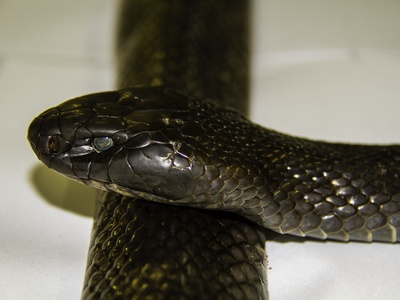
Papuan Blacksnake
A large venomous snake whose populations are declining. It is threatened by habitat loss due to agriculture, persecution by humans, and the spread of the toxic invasive cane toad, which kills the snakes when they attempt to eat them.
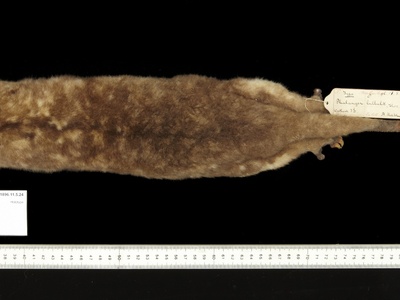
Woodlark Cuscus
This arboreal marsupial is endemic to a few small islands, making it extremely vulnerable. Its primary threats are habitat loss from logging and agricultural expansion, as well as predation by introduced dogs and cats.
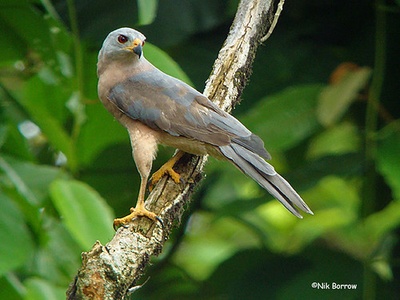
New Britain Goshawk
A little-known raptor endemic to the mountains of New Britain. Due to its restricted range and reliance on montane forests, it is considered vulnerable to habitat loss from logging and forest clearing, though its population status is poorly understood.
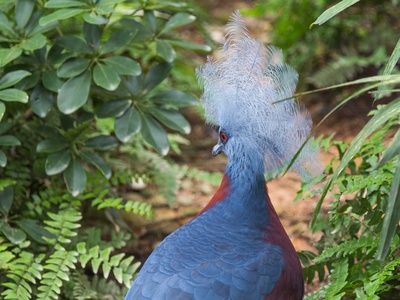
Sclater’s Crowned-pigeon
A large, ground-dwelling pigeon with an elegant blue crest. It is heavily hunted for its meat and trapped for the pet trade. Widespread logging and conversion of its lowland forest habitat for agriculture are also major threats.
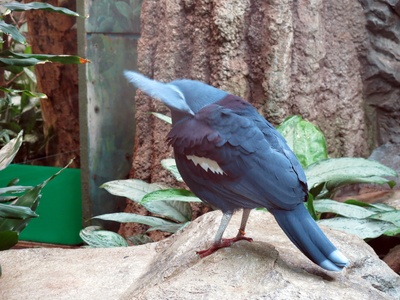
Western Crowned-pigeon
This spectacular, large blue-grey pigeon is threatened by habitat destruction due to logging and subsistence farming. It is also a prized target for hunters seeking its meat and feathers, which has led to its disappearance from many accessible areas.
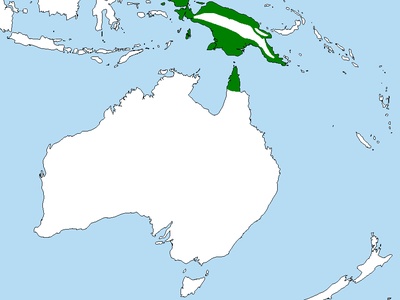
Palm Cockatoo
A massive, smoky-grey parrot with a huge crest and bare red cheek patches. It is threatened by habitat loss and degradation, particularly the loss of large nesting trees. The illegal pet trade also puts significant pressure on wild populations.
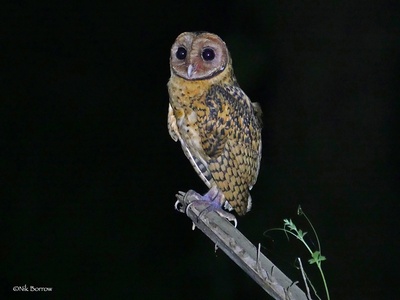
Golden-masked Owl
A poorly known barn owl endemic to New Britain. It is presumed to be declining due to the extensive and rapid loss of its lowland forest habitat, which is being cleared for oil palm plantations and timber extraction.
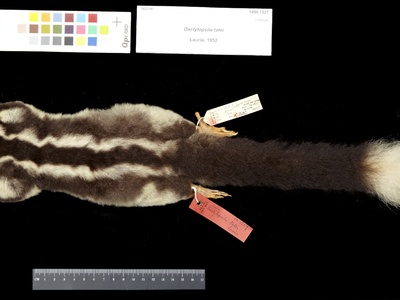
Fergusson Island striped possum
Known from only a few specimens, this elusive possum is critically endangered due to its extremely restricted range on a single island. It is threatened by habitat loss from forest clearing and potential predation by introduced species.
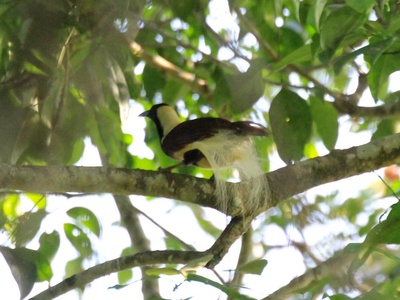
Emperor Bird-of-paradise
Endemic to the Huon Peninsula, this stunning bird-of-paradise is known for the male’s elaborate plumage. It is vulnerable due to its small range, which is subject to habitat degradation from logging and subsistence agriculture.
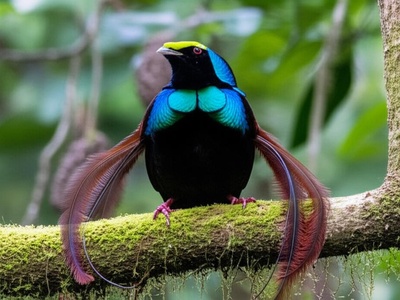
Wahnes’s Parotia
A bird-of-paradise with a unique “ballerina” courtship dance. It has a restricted range and its population is declining due to forest clearing for subsistence gardens and coffee plantations, which fragments its specialized habitat.
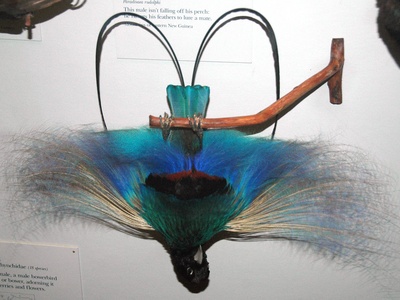
Blue Bird-of-paradise
Often called one of the most beautiful birds in the world, the male hangs upside down to display its vibrant blue plumes. Habitat loss from logging and agriculture, as well as some hunting for feathers, threaten this iconic species.
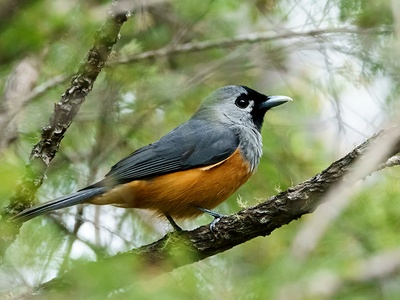
Black-faced Monarch
A small, active flycatcher whose mainland populations are secure but specific subspecies are threatened. It faces threats from habitat loss and degradation, particularly on smaller islands where forest clearing can have a disproportionate impact on populations.
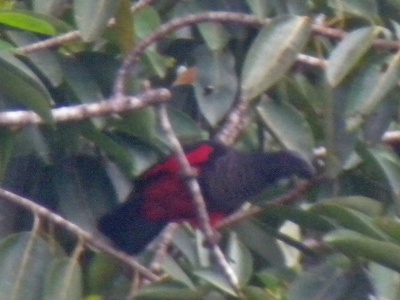
New Guinea Vulturine Parrot
Also known as Pesquet’s Parrot, this large, specialized frugivore is highly sought after for its bright red feathers, which are used in cultural ceremonies. This targeted hunting, combined with habitat loss, has caused significant population declines.
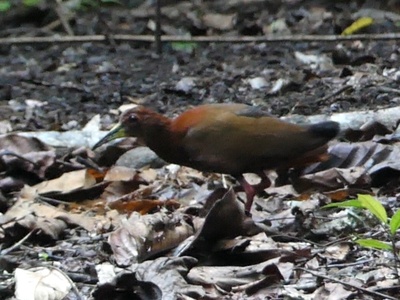
Bare-eyed Rail
A secretive, ground-dwelling bird that is very difficult to observe. It is threatened by the loss and degradation of its forest habitat and is likely also impacted by predation from introduced dogs, cats, and rats.
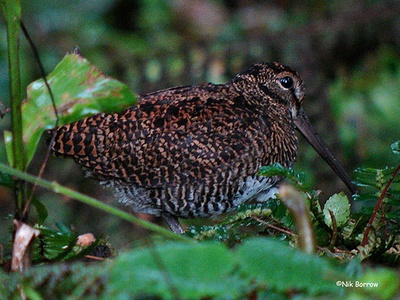
New Guinea Woodcock
A cryptic, forest-dwelling shorebird that is poorly known. Its population is believed to be small and is threatened by habitat degradation from logging and agriculture, as well as potential predation by introduced mammals in its high-altitude environment.
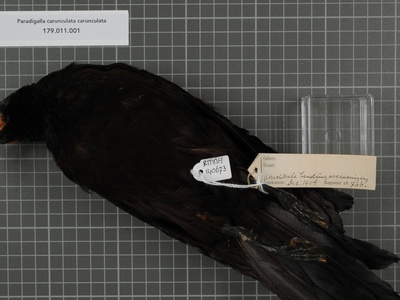
Long-tailed Paradigalla
A bird-of-paradise with distinctive yellow facial wattles. Its very restricted range is under threat from forest clearing for agriculture. While mainly in Indonesia, its range may near or cross the PNG border, making it a species of concern.
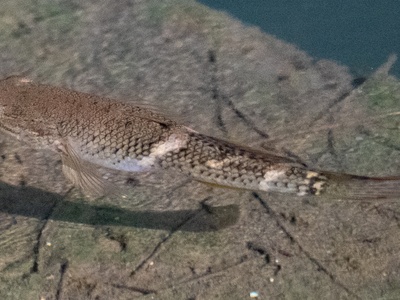
Spangled Gudgeon
A species of sleeper goby found in fresh and brackish waters. It is threatened by habitat degradation from coastal development, pollution from agriculture and industry, and the modification of river systems, which impacts its life cycle.
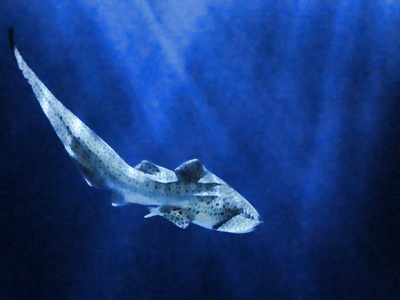
Zebra Shark
This distinctive shark, spotted as an adult, is threatened throughout its Indo-Pacific range by overfishing. It is caught both as a target species and as bycatch in various fisheries, and its coral reef habitat is also degrading.
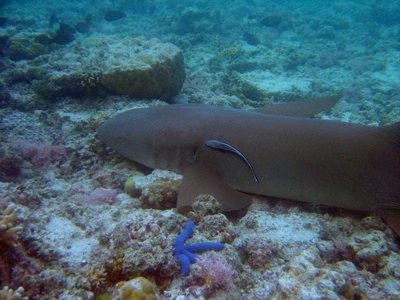
Tawny Nurse Shark
A nocturnal, bottom-dwelling shark that rests in caves and crevices during the day. It is vulnerable to intense inshore fishing pressure, including dynamite fishing, and habitat degradation of the coral reefs it depends on for shelter and food.
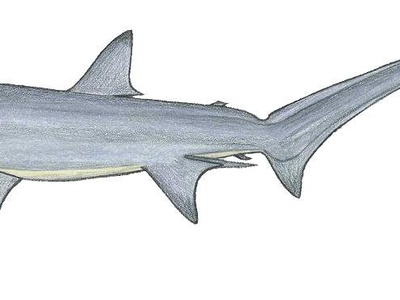
Bigeye Thresher Shark
Known for its incredibly long tail fin used to stun prey, this shark is highly sought after for its meat and fins. It is also caught as bycatch in longline and gillnet fisheries, leading to steep population declines.
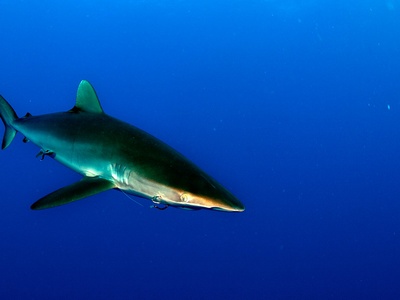
Silky Shark
A common pelagic shark that is heavily impacted by the global tuna fishing industry, where it is a major bycatch species. Its fins are also highly valued, leading to immense fishing pressure that has caused significant population declines.
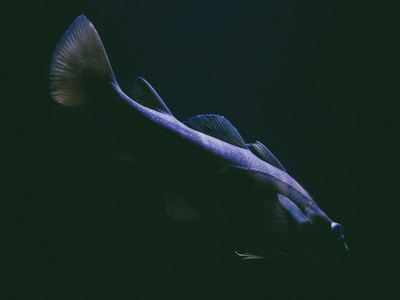
Big-nosed Unicornfish
A large species of surgeonfish that travels in schools. It is vulnerable due to overfishing for food and the aquarium trade. Its coral reef habitat is also under threat from climate change, pollution, and destructive fishing practices.
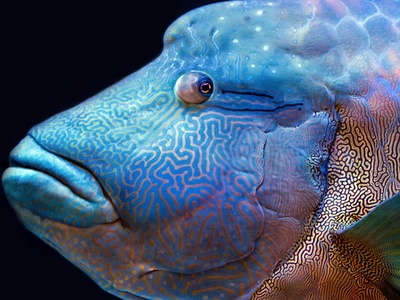
Humphead Wrasse
A massive, iconic reef fish known for the prominent hump on its head. It is severely threatened by the live reef fish trade, where it is targeted for luxury seafood markets. Its slow growth and late maturity make it extremely susceptible to overfishing.
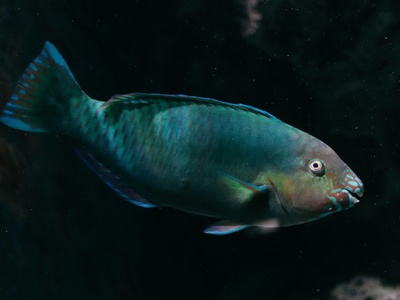
Green Humphead Parrotfish
The largest species of parrotfish, it plays a key role in reef health by grazing on coral and algae. It is vulnerable to overfishing, particularly night-time spearfishing, as it sleeps in shallow reef areas in large, predictable groups.
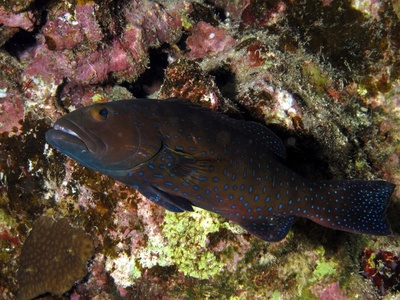
Squaretail Coral Grouper
A highly-valued food fish that forms large, predictable spawning aggregations. These aggregations are heavily targeted by fisheries, leading to rapid local depletions. This unsustainable fishing pressure is the primary threat to the species.
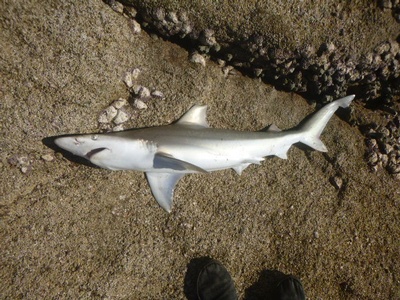
Creek Whaler
A small, poorly-known shark species with a restricted range. It is vulnerable to habitat degradation from coastal development and pollution, and is likely taken as bycatch in local inshore gillnet and trawl fisheries operating in its habitat.
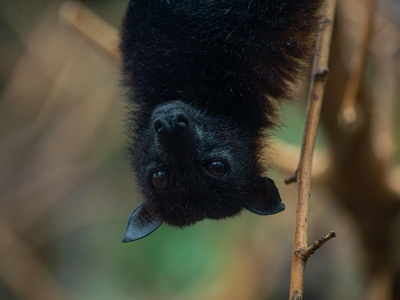
Bougainville Monkey-faced Bat
A large, rare fruit bat with a monkey-like face, it is critically endangered due to its extremely limited range. It is threatened by habitat destruction from logging and agriculture, as well as hunting for food by local people.
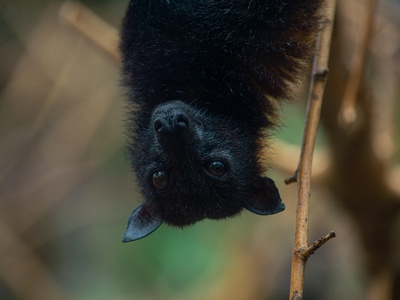
New Georgian Monkey-faced Bat
This fruit bat is threatened by forest clearance for logging and plantations. Its dependence on primary forest makes it highly vulnerable to habitat disturbance, and hunting also contributes to its decline in some areas.
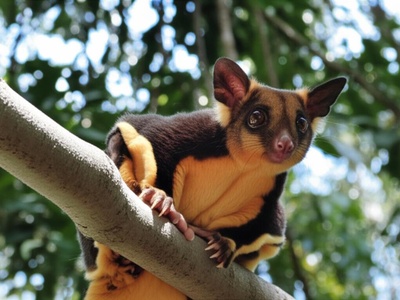
Northern Glider
A species of gliding possum known from a very small, isolated area. It is critically endangered due to severe habitat loss and degradation from logging and the expansion of subsistence agriculture, as well as pressure from hunting.
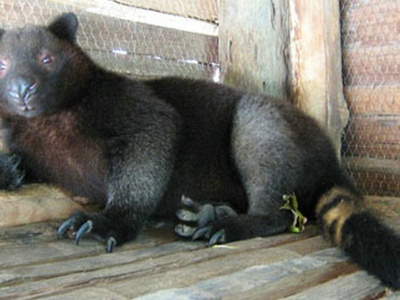
Tenkile
Also known as Scott’s Tree-kangaroo, this is one of the most endangered of all marsupials. With a tiny range and a population of only a few hundred, it is critically threatened by hunting and habitat loss.
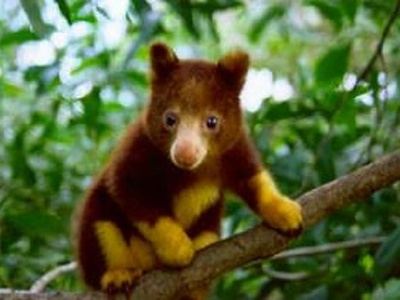
Golden-mantled Tree-kangaroo
Considered by some to be the most beautiful tree-kangaroo, this species is on the brink of extinction. It has an extremely small and fragmented range and is under intense pressure from hunting and deforestation for gardens.
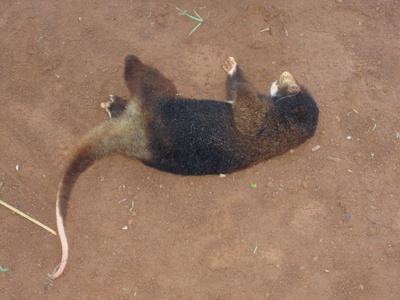
Admiralty Cuscus
This cuscus is endemic to the Admiralty Islands. While somewhat tolerant of disturbed habitats, its small island range makes it vulnerable to over-hunting and large-scale habitat destruction, as well as predation by introduced species like dogs.
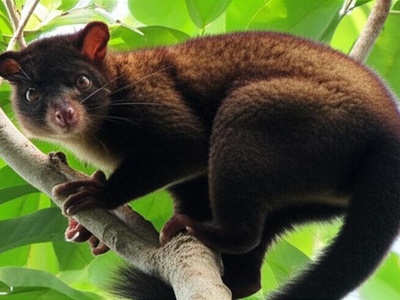
Telefomin Cuscus
Known only from a single, small area, this cuscus is critically endangered and possibly extinct. Its habitat was devastated by a major fire and drought in 1998, and there have been no confirmed sightings since.
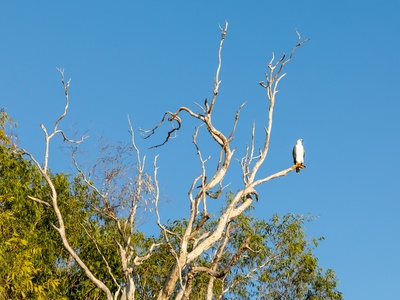
White-bellied Sea-eagle
Though widespread, this large raptor is declining in many areas. It is threatened by coastal development destroying nesting sites, pollution of waterways, and human disturbance. It is often persecuted due to a mistaken belief that it harms fisheries.
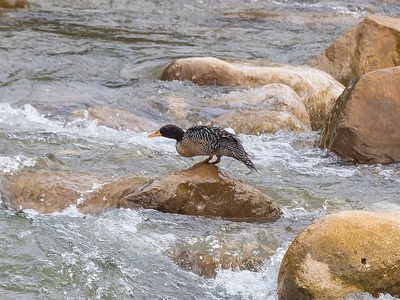
Salvadori’s Teal
A rare and secretive duck endemic to New Guinea’s mountains. It is threatened by hunting, predation by dogs, and degradation of its pristine river habitats by logging, mining, and agriculture, which cause siltation and pollution.
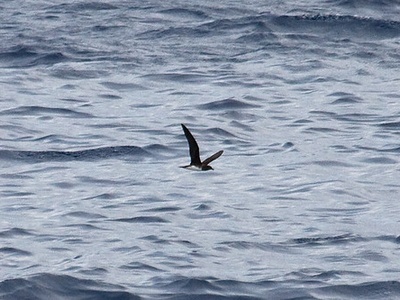
Beck’s Petrel
One of the world’s rarest seabirds, thought extinct for decades until recent sightings. Its nesting sites are unknown but are presumed to be threatened by introduced predators like rats and cats on its breeding islands.
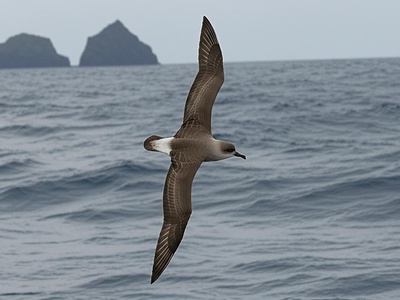
Heinroth’s Shearwater
A poorly known seabird with a small population. Its nesting colonies are highly vulnerable to predation by introduced species such as rats, cats, and dogs, which is the primary driver of its decline.
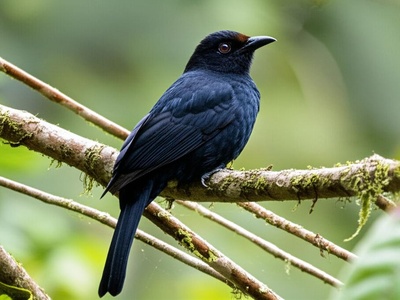
New Ireland Friarbird
A species of honeyeater endemic to the mountain forests of New Ireland. It is considered vulnerable because of its restricted range, which is susceptible to habitat loss and degradation from logging and agricultural clearing.
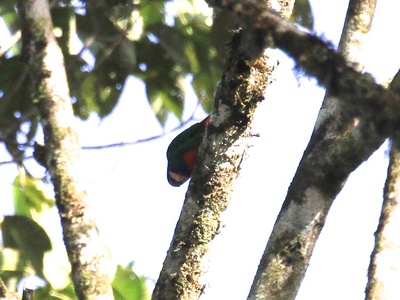
Red-breasted Pygmy Parrot
This tiny parrot nests in arboreal termite mounds. While widespread, certain subspecies are restricted to small island ranges and are threatened by habitat loss and the impacts of introduced predators on their nesting success.
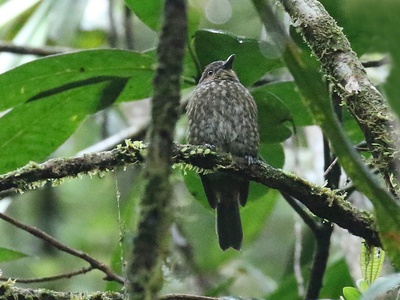
Mottled Berryhunter
A unique bird, the sole member of its family. Its population is believed to be declining due to the gradual loss and fragmentation of its forest habitat, caused by logging and the expansion of subsistence agriculture.
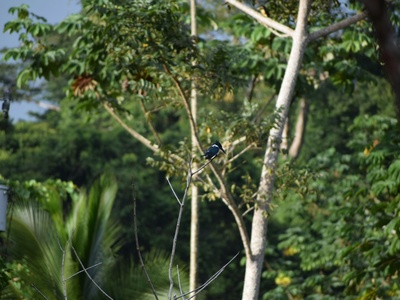
Papuan Whipbird
A very poorly known and secretive bird, rarely seen. It is believed to be threatened by habitat loss within its limited range, although a lack of data makes its true status difficult to assess.
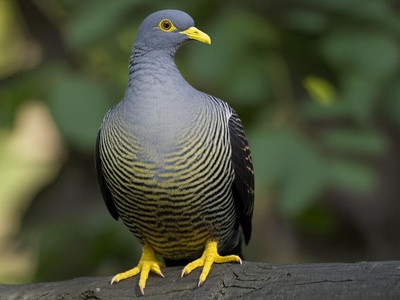
Yellow-legged Pigeon
A rare and nomadic pigeon that is severely threatened by the widespread logging of its lowland forest habitat. Hunting and predation by introduced species are also thought to contribute to its rapid decline.
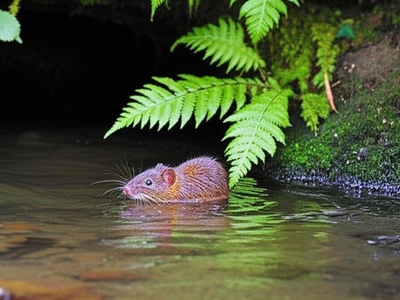
Moseley’s Rock-rat
A semi-aquatic rodent that is poorly understood. It is considered vulnerable due to its apparent rarity and the ongoing threats of habitat degradation from logging and agriculture within the New Guinea highlands.
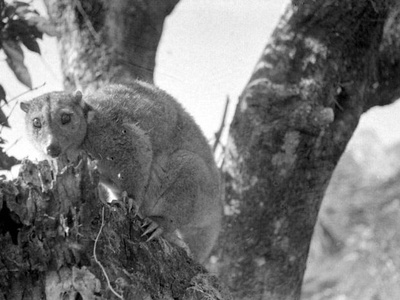
Northern Common Cuscus
While common in some areas, populations in other parts of its range are declining. It is threatened by over-hunting for food and habitat loss, particularly on smaller islands where human pressure is more intense.
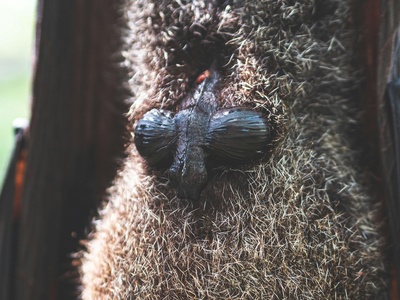
Stein’s Cuscus
A cuscus adapted to high-altitude forests. Its populations are threatened by hunting pressure from local communities and habitat loss as agriculture and other human activities encroach further into the highlands.
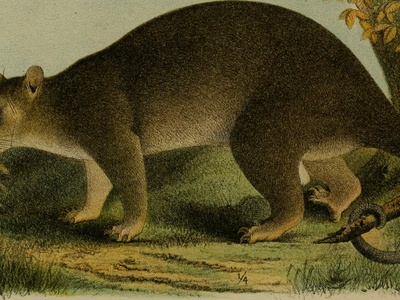
Ground Cuscus
A semi-terrestrial marsupial that dens in burrows. It is a very important traditional food source and is heavily hunted throughout its range. This hunting pressure, combined with habitat loss, is causing population declines.
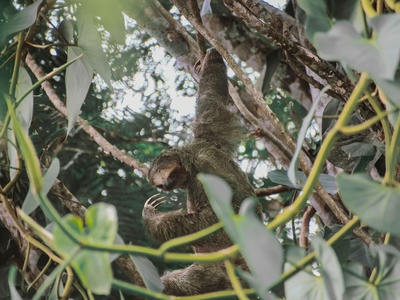
Common Spotted Cuscus
Though adaptable, this species is heavily hunted for its meat and skin. In some areas, this pressure is unsustainable. Habitat loss also threatens populations, particularly where forests are cleared for large-scale agriculture.
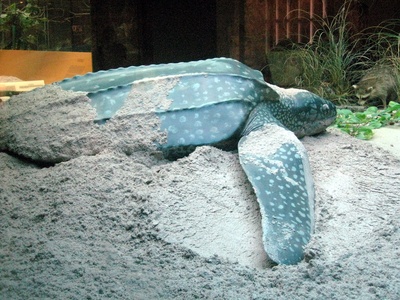
Leatherback Sea Turtle
The largest sea turtle, it faces global threats including fisheries bycatch, ingestion of plastic debris, and egg harvesting. Nesting beaches in PNG are critical but are threatened by coastal development, erosion, and predation.
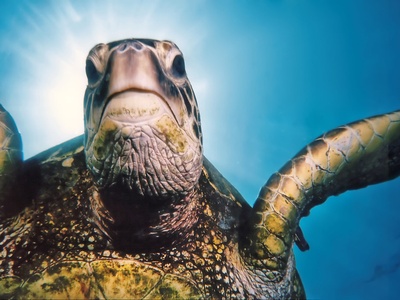
Green Sea Turtle
This large sea turtle is endangered due to overharvesting of eggs and adults, fisheries bycatch, and the degradation of its nesting and foraging habitats, including coral reefs and seagrass beds, from pollution and coastal development.
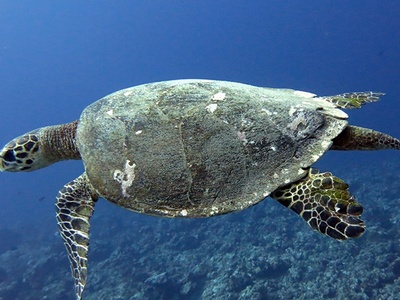
Hawksbill Sea Turtle
Critically endangered primarily due to the illegal wildlife trade, where it is hunted for its beautiful “tortoiseshell” carapace. It also faces threats from egg collection, fisheries bycatch, and the destruction of its coral reef habitat.
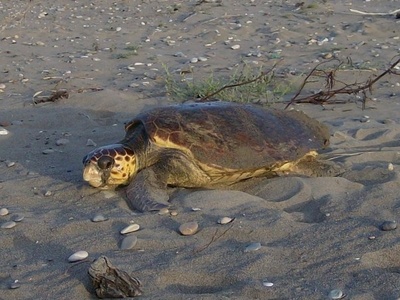
Loggerhead Sea Turtle
While not a major nesting location, PNG’s waters provide important foraging grounds for this species. It is threatened globally by bycatch in commercial fisheries, particularly longlines and trawls, and by plastic pollution and habitat degradation.
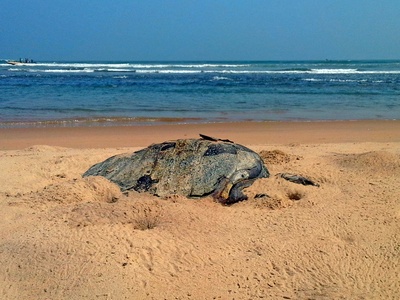
Olive Ridley Sea Turtle
The most abundant sea turtle, but still vulnerable to major threats. In PNG, populations are impacted by egg harvesting, bycatch in trawl fisheries (especially prawn trawlers), and destruction of nesting beaches.
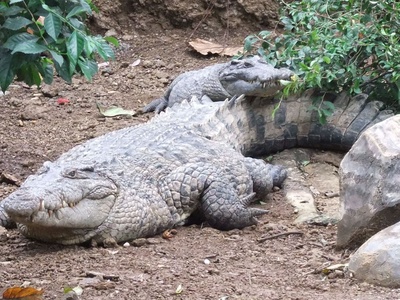
New Guinea Crocodile
This species was heavily overhunted for its valuable skin in the mid-20th century. While regulated ranching has helped populations recover, it remains threatened by illegal hunting and habitat loss from wetland drainage for agriculture.
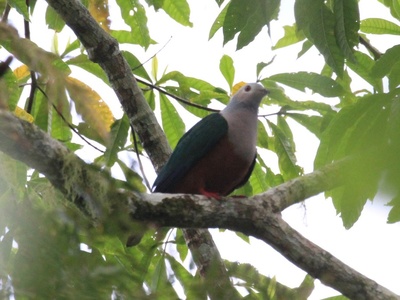
Finsch’s Imperial-pigeon
Endemic to the Bismarck Archipelago, this large pigeon is threatened by ongoing habitat loss and fragmentation due to logging and the expansion of oil palm plantations. Hunting pressure is also a significant concern in some areas.
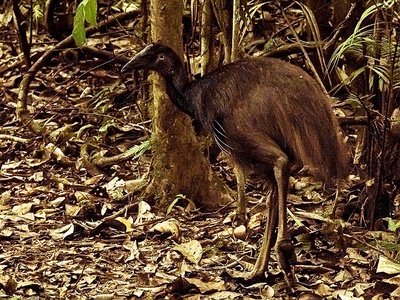
Dwarf Cassowary
The smallest cassowary species, it inhabits rugged mountain terrain. It is threatened by habitat loss, hunting for food, and is particularly vulnerable in areas where its forest home is fragmented by roads and agriculture.
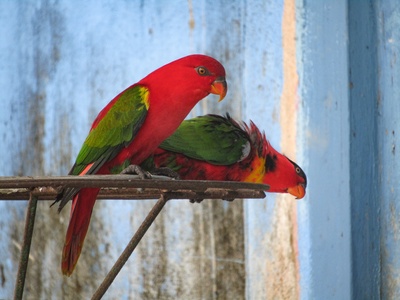
Yellow-bibbed Lory
This colorful parrot has a restricted range and is threatened by habitat loss. Trapping for the local and international pet trade also poses a significant threat to its small island populations.
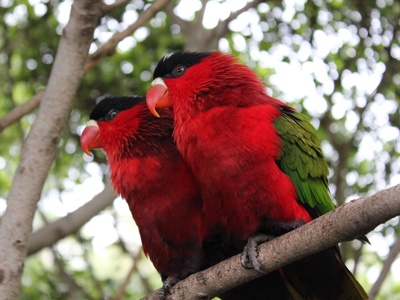
Purple-bellied Lory
A brightly colored lory that is popular in the pet trade. It is vulnerable due to trapping pressure and the loss of its lowland forest habitat to logging and agriculture, especially on smaller islands where populations are more fragile.
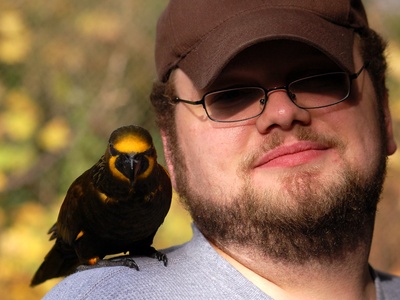
Duyvenbode’s Lory
Also known as the Brown Lory, its population is declining due to habitat loss and trapping for the aviary trade. Its preference for lowland coastal areas puts it in direct conflict with human development and agriculture.
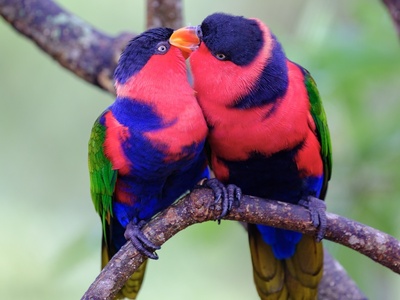
Black-capped Lory
A common bird in the pet trade, wild populations are under pressure from trapping. Widespread deforestation for logging and agriculture is also reducing the available habitat for this widespread but declining species.
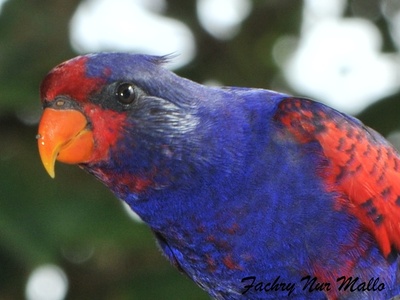
Red-and-blue Lory
While primarily Indonesian, its historic range included islands near PNG. It is endangered due to massive deforestation and unsustainable trapping for the pet trade, which has extirpated it from parts of its former range.
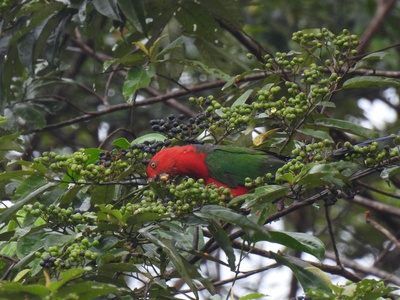
Moluccan King-parrot
A striking red and green parrot. It is threatened by habitat loss due to logging and agriculture. It is also trapped for the pet trade, and this pressure contributes to population declines in accessible parts of its range.
